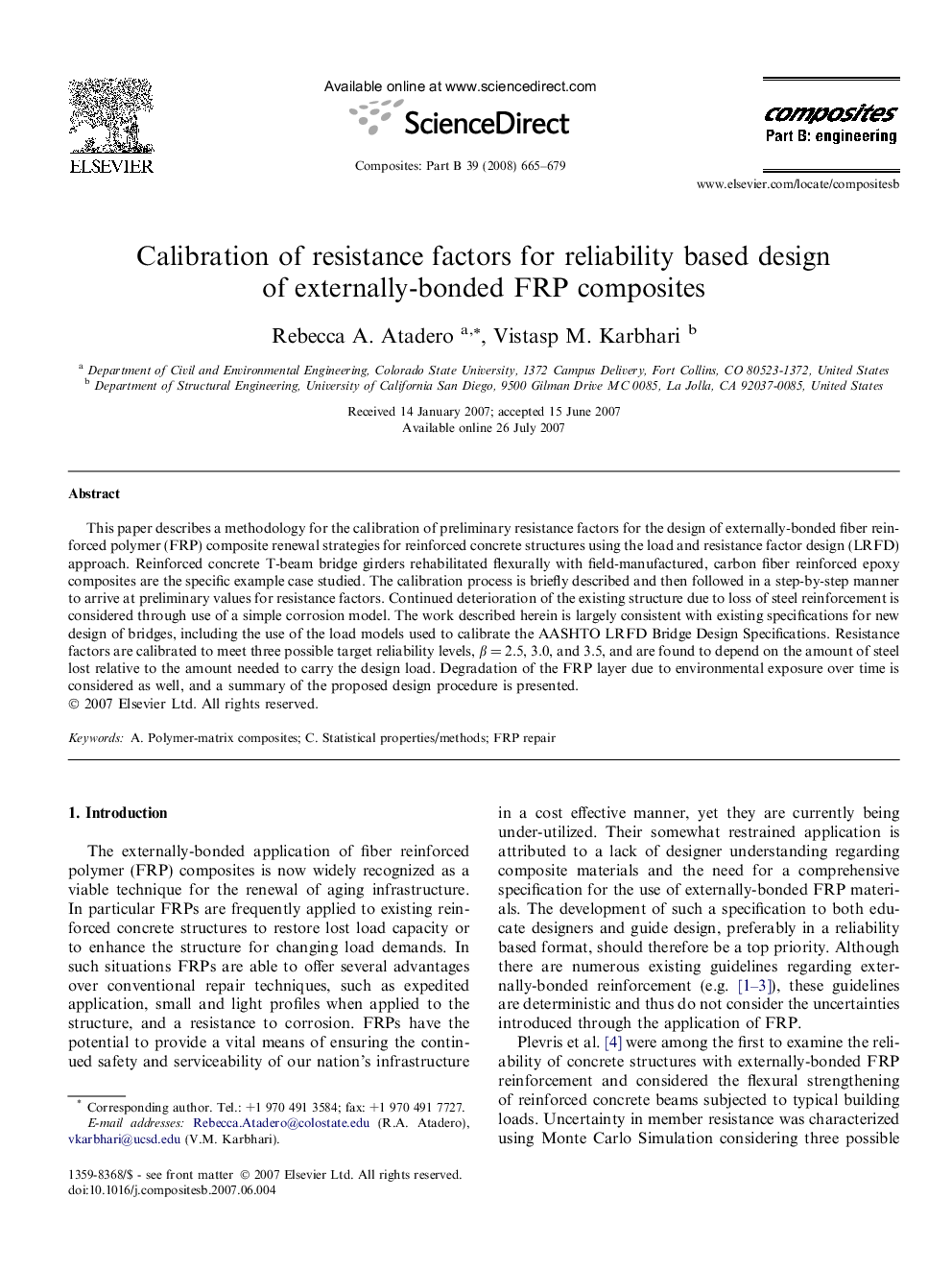| Article ID | Journal | Published Year | Pages | File Type |
|---|---|---|---|---|
| 819673 | Composites Part B: Engineering | 2008 | 15 Pages |
This paper describes a methodology for the calibration of preliminary resistance factors for the design of externally-bonded fiber reinforced polymer (FRP) composite renewal strategies for reinforced concrete structures using the load and resistance factor design (LRFD) approach. Reinforced concrete T-beam bridge girders rehabilitated flexurally with field-manufactured, carbon fiber reinforced epoxy composites are the specific example case studied. The calibration process is briefly described and then followed in a step-by-step manner to arrive at preliminary values for resistance factors. Continued deterioration of the existing structure due to loss of steel reinforcement is considered through use of a simple corrosion model. The work described herein is largely consistent with existing specifications for new design of bridges, including the use of the load models used to calibrate the AASHTO LRFD Bridge Design Specifications. Resistance factors are calibrated to meet three possible target reliability levels, β = 2.5, 3.0, and 3.5, and are found to depend on the amount of steel lost relative to the amount needed to carry the design load. Degradation of the FRP layer due to environmental exposure over time is considered as well, and a summary of the proposed design procedure is presented.
